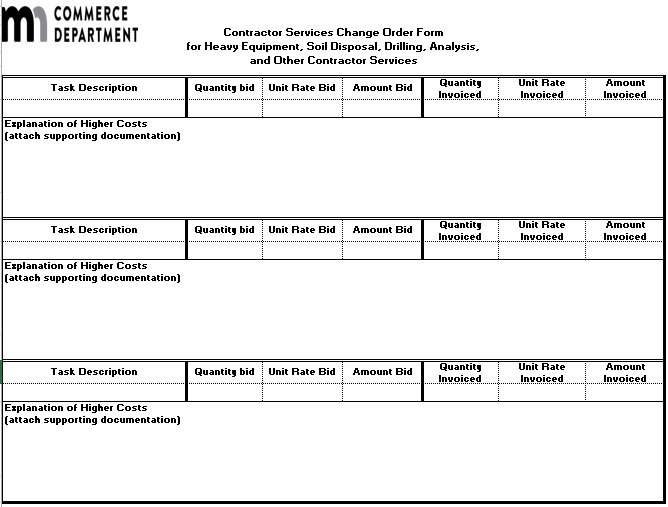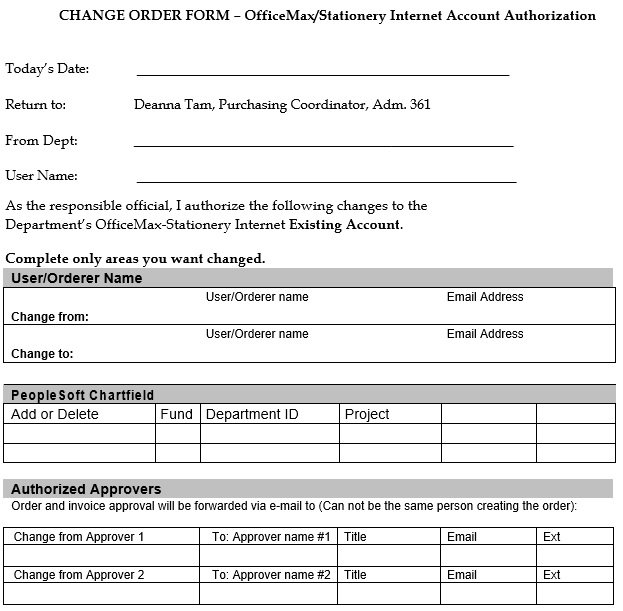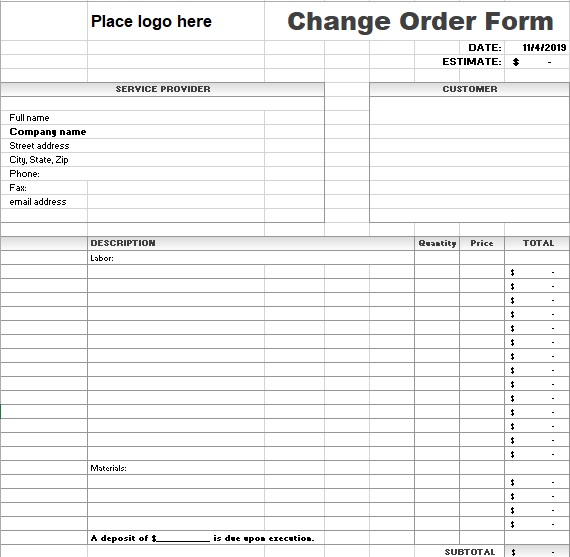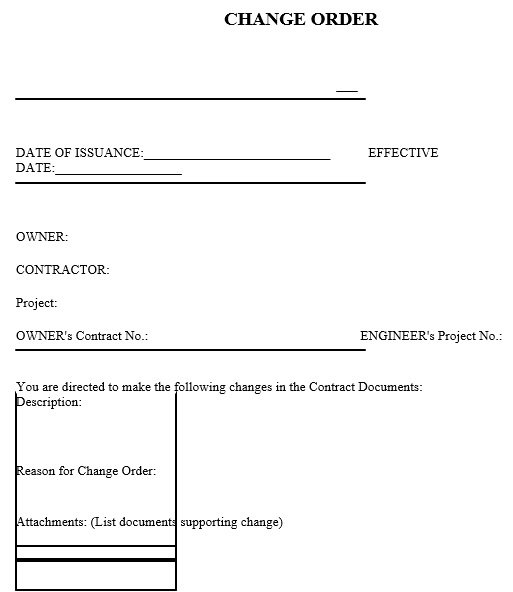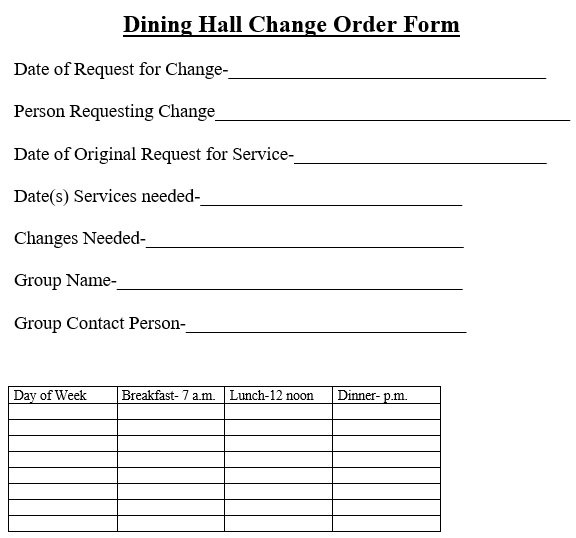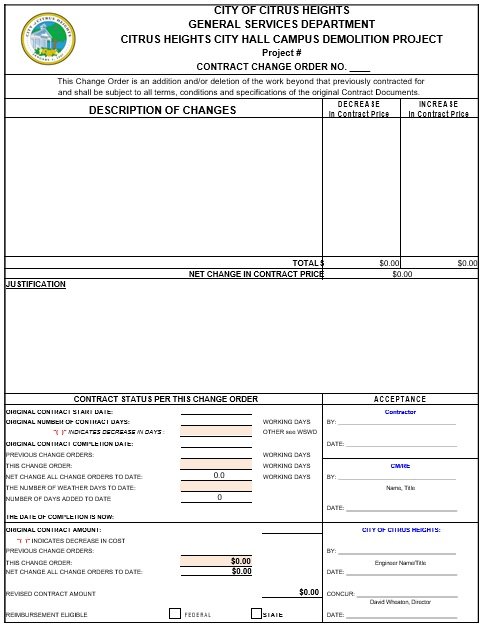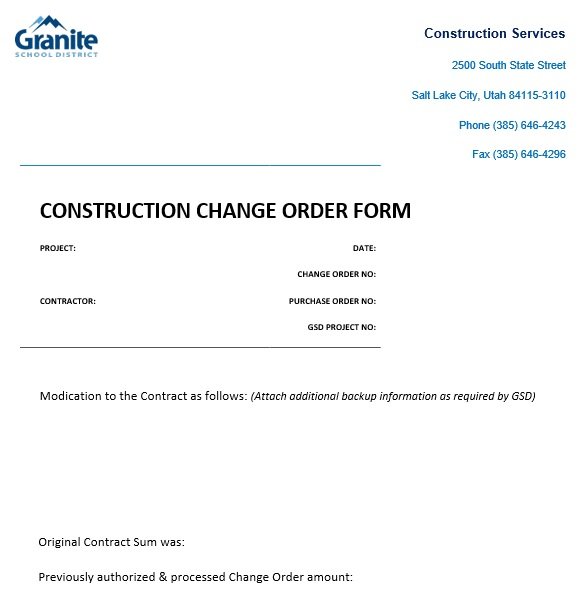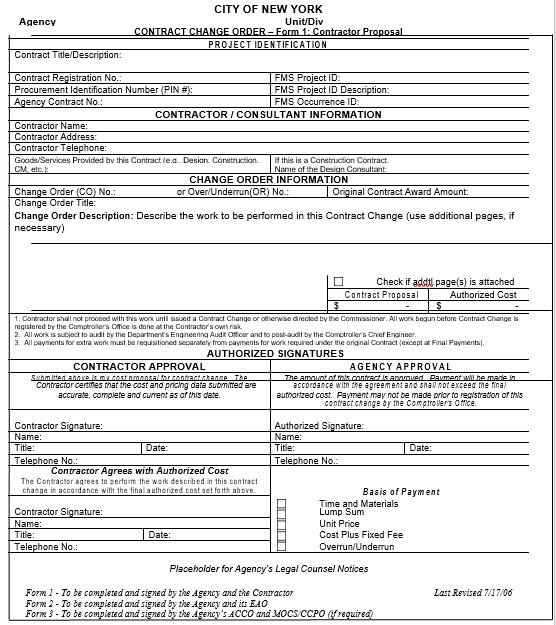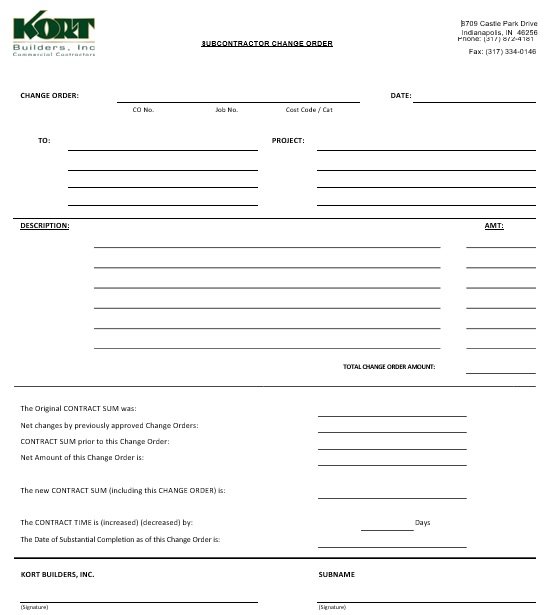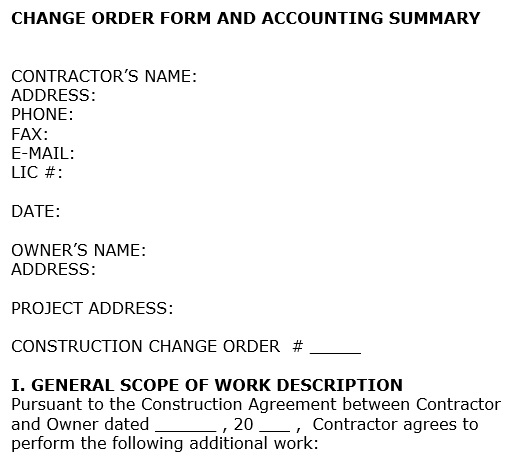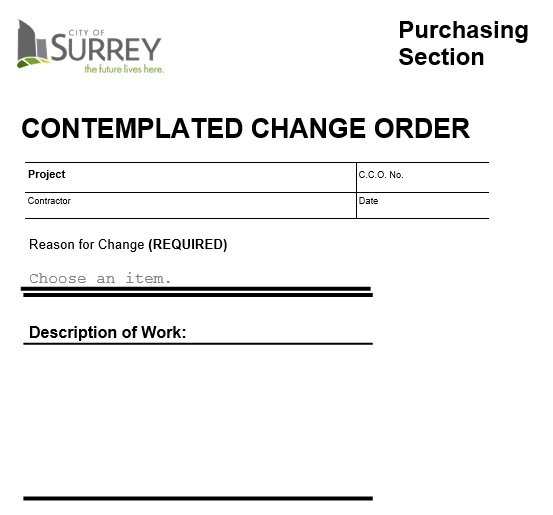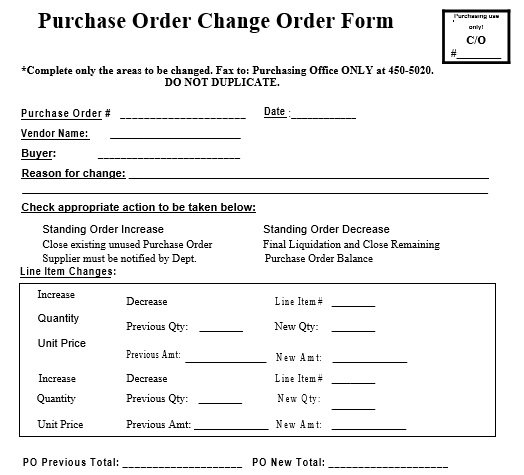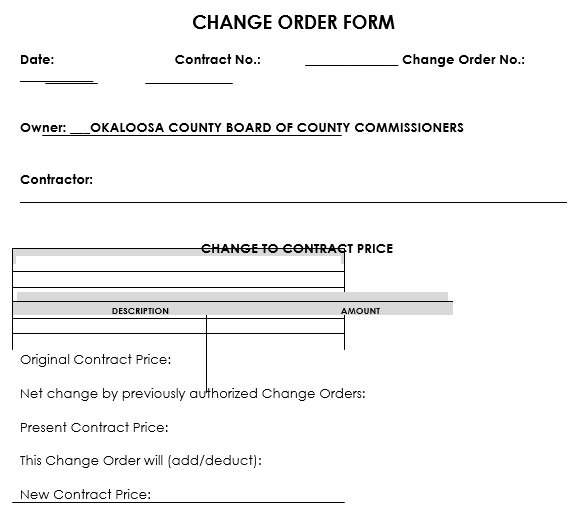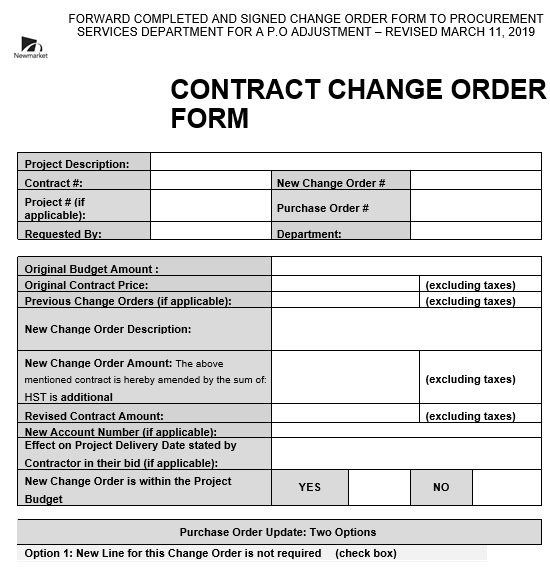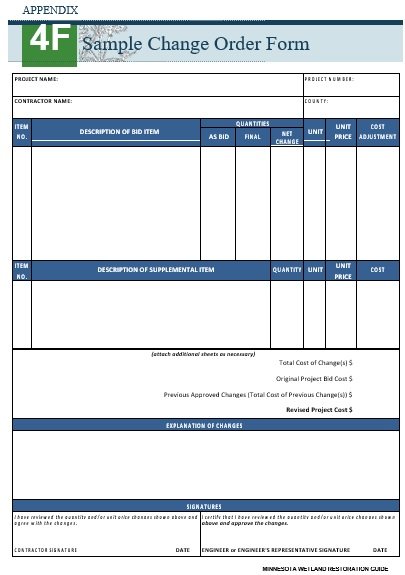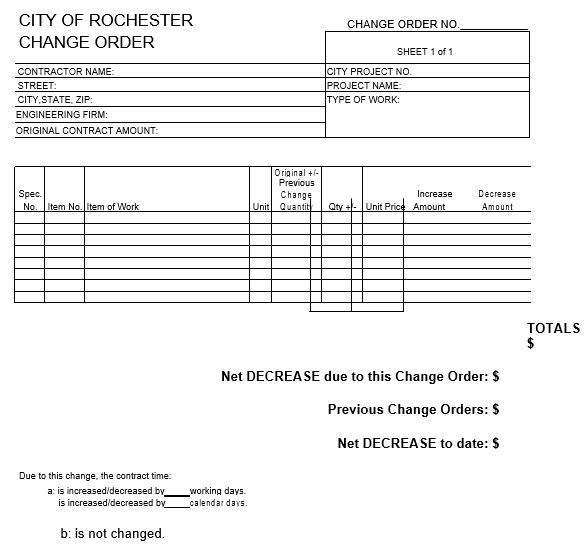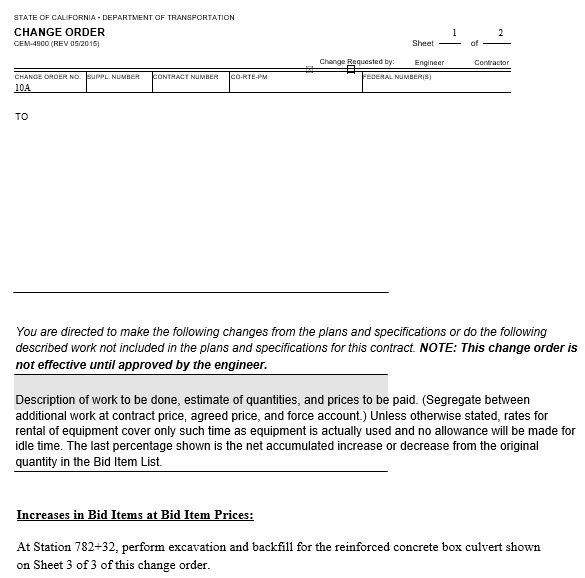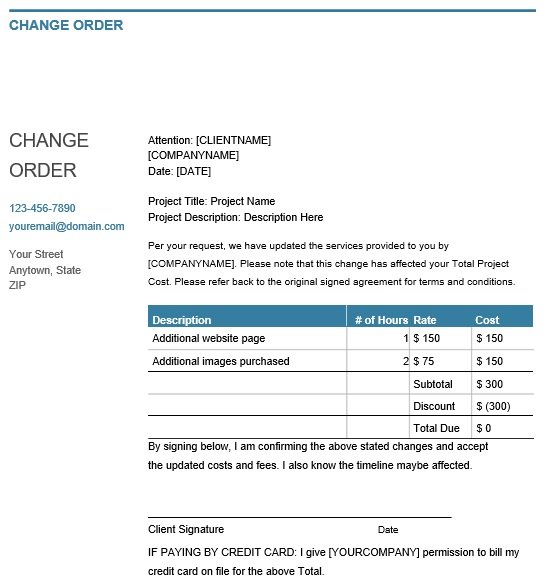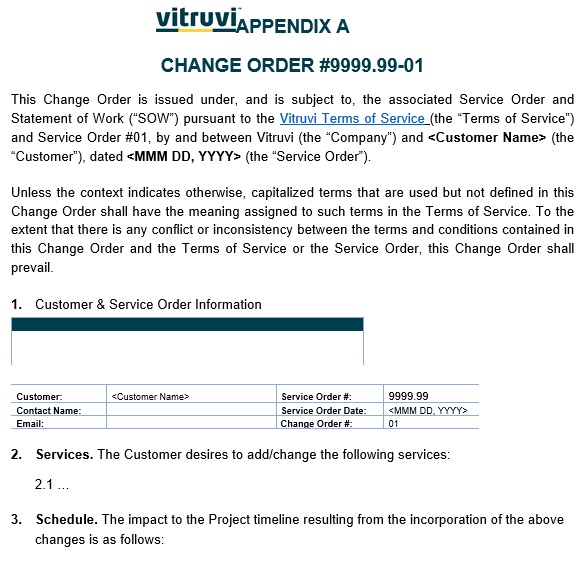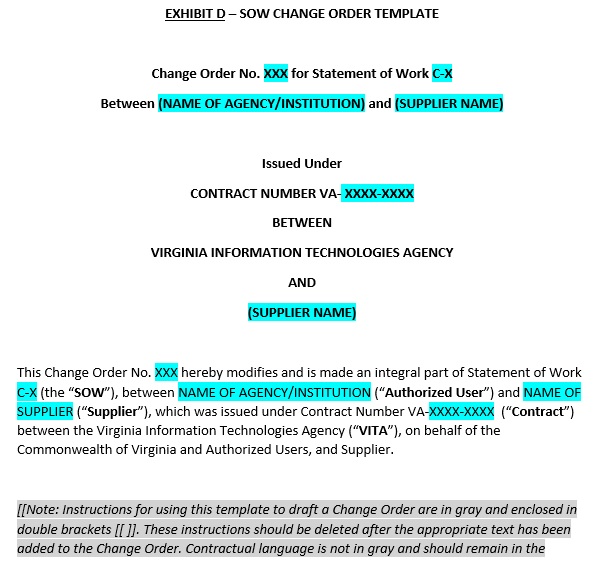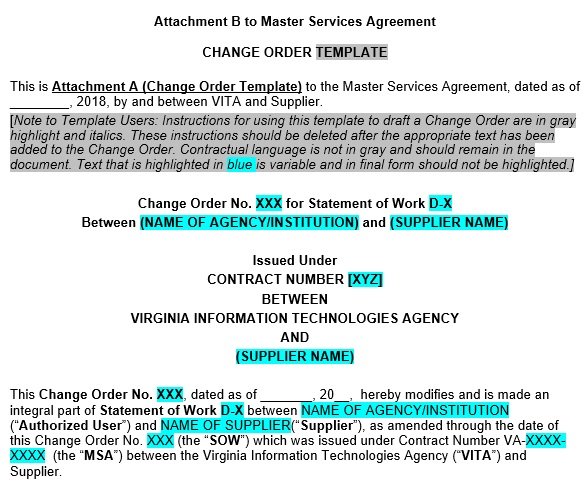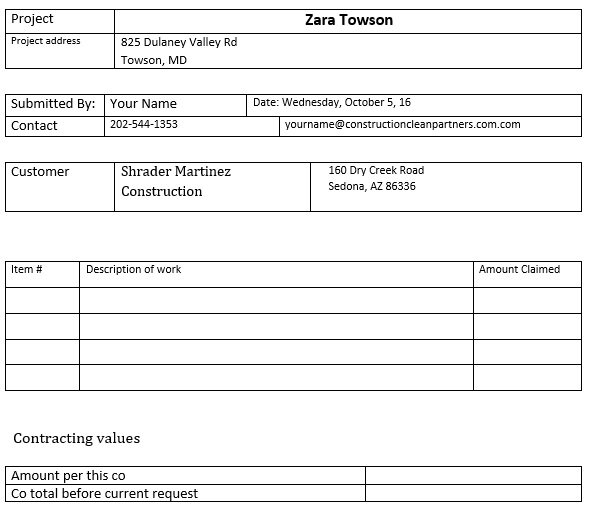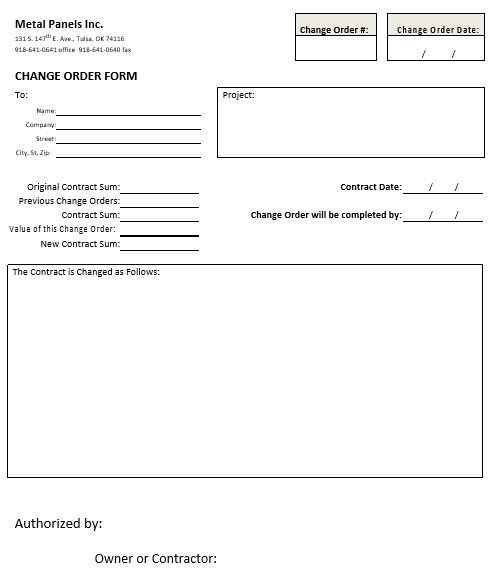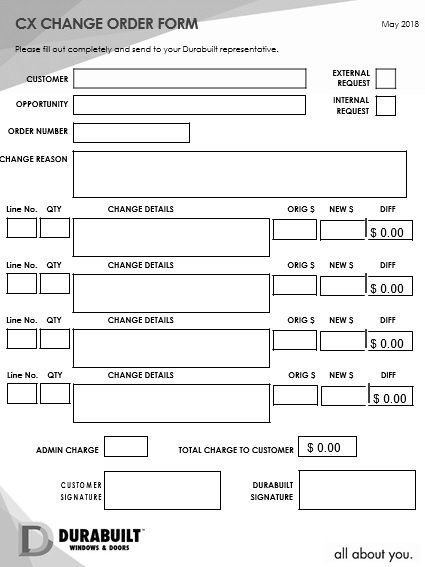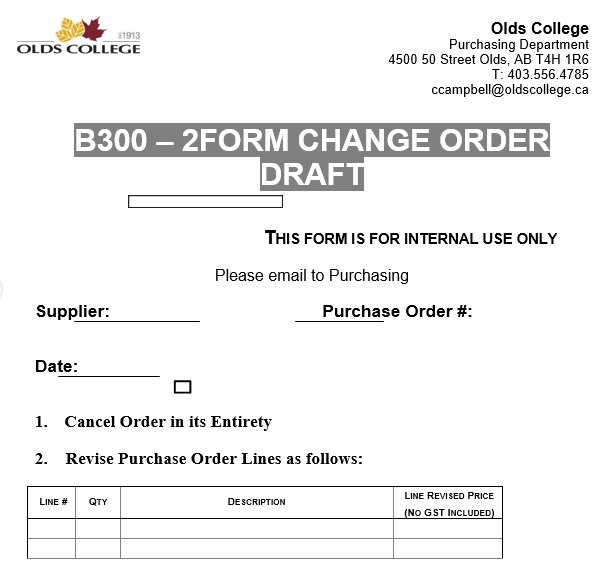A change order template is used during the course of a construction project in order to introduce certain modifications to the original plans. This document describes everything in a professional manner that why a specific work gets introduced, modified or eliminated from the original agreement made by the parties.
Table of Contents
- 1 What is a change order form?
- 2 A change order request in construction:
- 3 Why do you require a change order template?
- 4 What to include in a change order?
- 5 Who can use a change order form?
- 6 When should you use a change order form?
- 7 How to write a change order?
- 8 How to manage change orders?
- 9 The benefits of change order:
- 10 Conclusion:
- 11 Faqs (Frequently Asked Questions)
What is a change order form?
A change order template is a written order created by the client. It is used to make changes in the scope of work of the original agreement. This document explains the following;
- The new work that you have to accomplish or deleted
- The effect on the budget
- For the completing of the project, the modified schedule
Moreover, in large construction projects, change order forms are very common. For every large project, there might be as many as a hundred of these orders. Both you and your client use this document to decide what changes to make for the accomplishment of the project. These change orders follow contract laws.
A change order request in construction:
In the project construction and business management, a change order form is an important part of the change management process. In this form, the agreed upon scope of work by the contractor, client, and architect get implemented.
Furthermore, the original contract completion date or the budget can be effected by it. To deal with significant changes to the existing project, the change order may even force a new project.
Why do you require a change order template?
In large and complex projects, the change orders can become a problem because they have to be ended on a specified date. Documenting each change and remaining organized can be a difficult task. But, if you have an effective and streamlined process to deal with change order forms then it can save resources, time, and assist in minimizing the likelihood of issues. Below are the reasons that why you require this form;
For the customer:
Since the customers pay for the work so they have the authority to have it done according to their liking. Some customers aren’t aware that small modifications may result in more labor, costs, and materials. However, they have the right to ask you to make the changes.
For the contractor:
All contractors and subcontractors know that any changes in plans require more cost. To deal with in the job site, a minor change can actually be an expensive and complicated issue. A change order form is the best way to deal with these changes. At the end of the day, you are paid for the work you document but not for the work you perform.
What to include in a change order?
A change order included the following details;
- Revisions to the work which is being done
- The cost modifications made necessary by that work
- Any schedule delays or amendments that required due to that work
Who can use a change order form?
The change order form can be used by both the owner of the project and the contractor. That involves general contractors, subcontractors and sub-subcontractors. If they are participating in the change then their involvement is compulsory in the approval process. The change order is included in the body of the original contract when it gets approved for the work being performed. Also, the contractor has a right to file a mechanic’s lien in case payment is delayed.
When should you use a change order form?
When you have to place a request to change the contract among the owner of the project and one of the hired contractors to fulfill that contract, then the change order form is used. By having the change order form, you can easily manage that change and keep the project on schedule and within budget. Typically, it is used during the execution, control and monitor phases of a project. These changes usually come during the fulfillment of your deliverables.
How to write a change order?
Here are the steps on how to write a change order;
Review the original contract
Before making a change order, you have to review the original contract with your client to ensure that you follow the written procedures involved in it. A change order indicates that the client wants that the specific part of the project performed differently. It may also include purchasing new materials and services.
Identify if you need a change order
When the client wants to change something then firstly, you should identify whether you can still change the issue or if it’s too late. Also, you have to identify if such the change requires a change order template. This is because there could be some activities that aren’t significant enough to require this document.
Date the contract change order template
To create your form, you can use a spreadsheet or word-processing program. Provide your form an appropriate title and the date of the request.
Give a description of the change
Explain what you have to change in a detailed fashion. Mention the type of work required to complete the change and the materials. Also, add an explanation of any information you have to remember.
Include the cost
For changing something, it is a standard operating procedure to charge an extra fee. You can also charge the difference in cost to the client.
Get the important signatures for the form
In this dated document, both you (as the contractor) and the client should affix your signatures. This document serves as a legal contract and includes the document in the client’s file.
How to manage change orders?
Here are some tips to make the change order procedure easier;
Plan ahead
Performing some pre-construction due diligence can go a long way in easing the process of handling change orders. Beforehand, you should start reviewing all of the plans and specifications. This reduces the amount and needs for change orders required to successfully accomplish the project. The review makes you able to determine any areas or tasks of uncertainty as well as the risks associated with them.
Use a change order template
In the construction business, paperwork can be a serious problem. Every project has different suppliers, contractors, and subcontractors. All these groups can save more money and time during the evaluation process by using a standardized template.
Include photos and detailed information
While making a request for changes, ensure that it is easy and quick to assess. To explain the situation well, you can do this by giving adequate details. A change order must have the proposed cost. Also, include any effects that the change has on the schedule. Providing supporting evidence like daily reports, photographs, etc. is the best way to do this.
Have written approvals
Unapproved change orders are the major causes of financial losses. Therefore, it’s important that you do all approvals in writing.
Communicate
To keep everyone on the same page, an open communication channel can promote transparency.
The benefits of change order:
Change order form proves highly beneficial for the owners because it provides them high flexibility in their investments. It also assists them in mitigate problems. Moreover, the owners can easily capitalize their investments without any legal problems. For contractors and workers, it also proves very beneficial as it makes them able to introduce modifications in terms of time, requirement, order, etc.
Conclusion:
In conclusion, a change order template is a powerful document that helps in minimizing a lot of issues. This document keeps track of additional services the client requests for as well as the increases in cost. A properly executed change order can become part of the contract. Additionally, change orders can serve several purposes.
Faqs (Frequently Asked Questions)
Classic examples of change order include the following;
1- The owner wants to move the location of a wall to accommodate some other design components.
2- Modifying the finish of the floors from tile to terrazzo
3- Inserting a window where there was none in the original plans
A change order proposal is prepared by the contractor containing a price for extra work. After that, a formal and written change order is created and signed by all parties when the owner and contractor have agreed on scope, price, and schedule. Then, the changed work is performed by the contractor.

